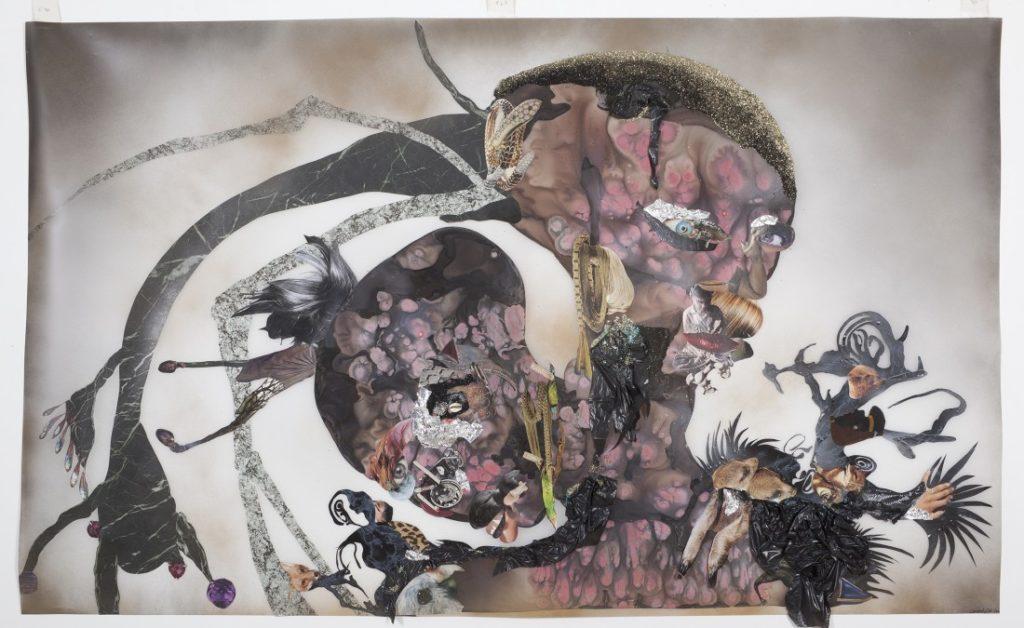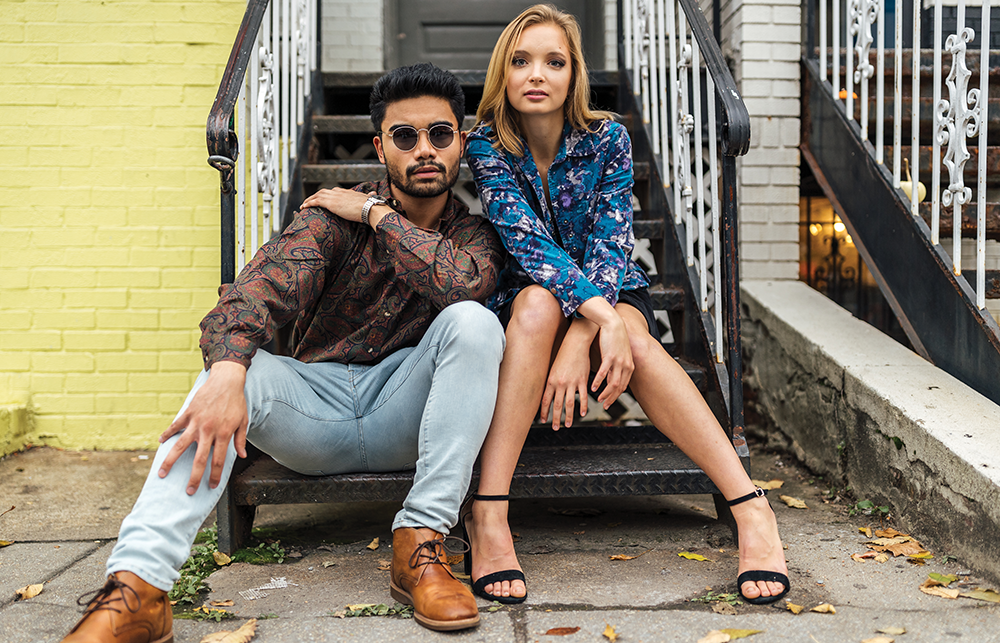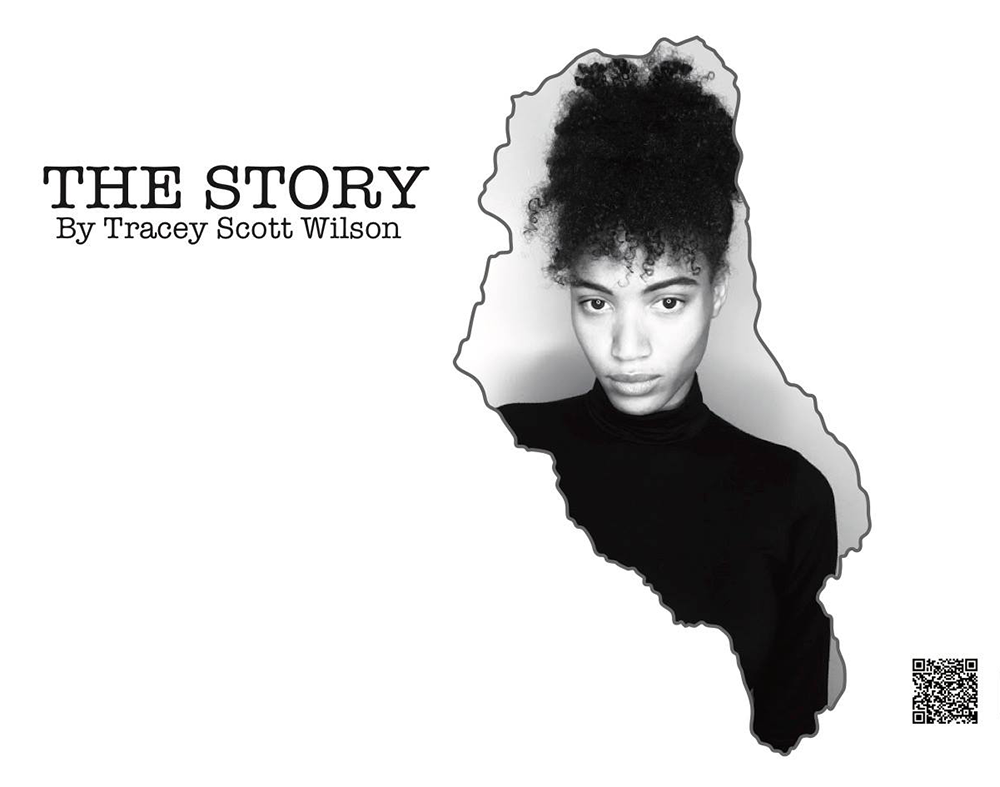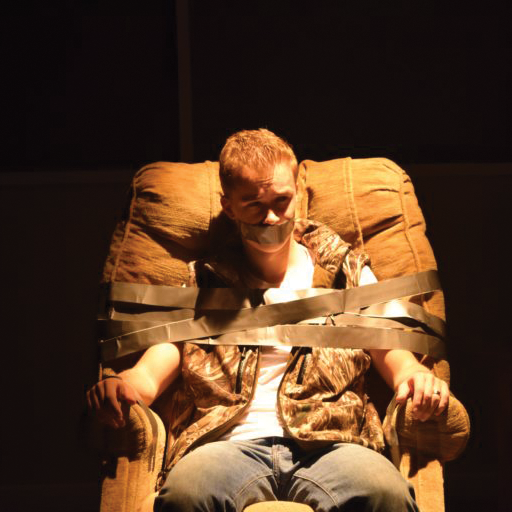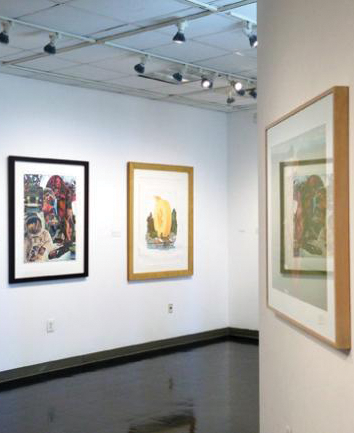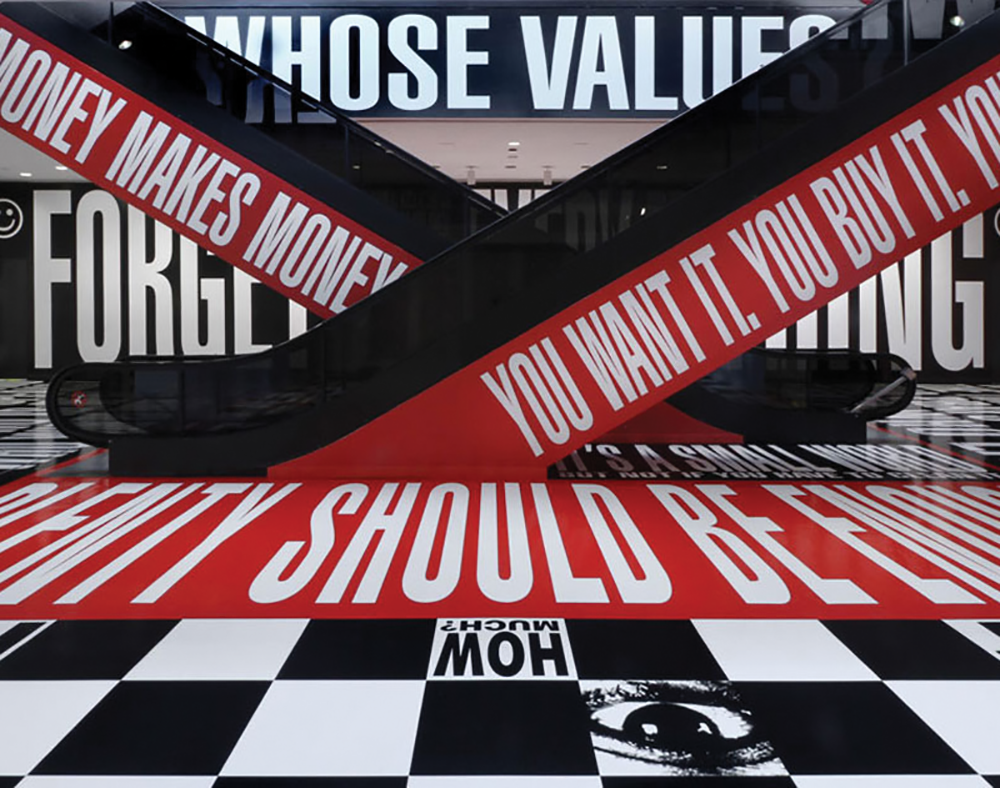Bearing a basket atop her head, Kenyan-born contemporary artist Wangechi Mutu’s newest character marches across the African countryside. In her 2015 animated film “The End of Carrying All,” Mutu depicts an ordinary woman picking her way across some grasslands at dusk, balancing her goods on her head as she goes.
The picture seems typical enough, until, almost imperceptibly, the woman’s basket slowly accumulates more and more commodities, and the woman herself begins to disappear beneath it. Crushed by the weight of industrial commodities — a satellite, a wheel, an electrical tower — all balanced upon her head, the woman becomes smaller, less significant and less identifiable until she is overcome entirely, enveloped by the industrial mass — all during the film’s just under 11-minute run time.
“I wanted to look back at an image of a woman that’s not often looked at,” Mutu said at an artist talk at the Maria and Alberto de la Cruz Gallery of Art in the Edmund A. Walsh Building on Nov. 8. “A woman that’s often quite invisible, just sort of part of the landscape.”
As a woman born and raised in Kenya, Mutu is acutely aware of her portrayal of African women in her film. Not often represented in other forms of media, African women — as well as women in general and the female body — often occupy a central role in Mutu’s work. In exploring the lives of African women and the gender as a whole, Mutu has adopted common themes that she feels inclined to employ.
“You know, I think when I’m making a work, I have this feeling that I’m going to create this piece, and it’s going to end up speaking of this, that and the other,” Mutu said, reflecting on her work since graduating from Yale University School of Art with a Master of Fine Arts in sculpture in 2000. “But I think what ends up happening is I make the same work I’ve always made, which is a work that describes the condition of being human and the condition of being a female human.”
Mutu chooses to explore these ideas through several art forms, including drawing, watercolor, sculpture, collage, film and performance art. She has found her voice through her art, and over the years she has captured not only her own feelings and perspectives but also larger issues of feminism and social justice.
When she first entered the art world after graduate school, Mutu found herself creating many watercolor pieces. According to Mutu, however, there was almost something too easy about this medium.
“There was something that I was going through at that time that I couldn’t even express in words,” Mutu said. “The cutting of the collage and the integration of body parts from magazines, from photography and media, especially women’s body parts, is what I used to express this disjuncture, this breakage, this inner turmoil.”
Mutu has continued to develop her skills as she produces more artwork. Much of her work centers on the female figure, and she hopes to raise questions not only about what it means to be a woman, but also about what it means to be human. She draws inspiration from both her own life and the world around her.
“I’m depicting a subject,” she said. “But I’m also addressing something that I have to experience, because at this moment in time, as much as I see how women are particularly vulnerable, I am also that woman. I also exist in that condition.”
By incorporating her own experience and perspective into her pieces, Mutu hopes to create art that communicates a message about the power of womanhood and universality of humanity. To Mutu, art is the language through which she can speak up for herself and others. She believes that language can best communicate what it means to be fully human and explains where we might have lost our way in that pursuit.
“Humanity is in all of us,” Mutu said. “There is something in all of us that understands what a human is, and that it’s something that is utterly fragile and full of desire to be alive. We know that our humanity is something undeniable, but it’s also shared.”
In a world that may seem more fragmented than ever, Mutu strives to bridge the gaps that divide us by reminding her viewers of our shared humanity.
She does not claim to have the capacity to solve the world’s problems, nor does she try to articulate definitive statements with her pieces of art. Rather, she hopes that simply by being curious and asking questions, her audience will develop compassion for others and learn to appreciate the similarities that bring us together, instead of the differences that divide us.


